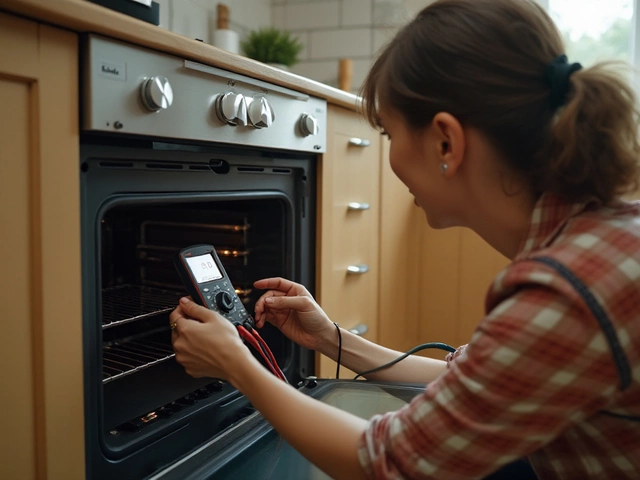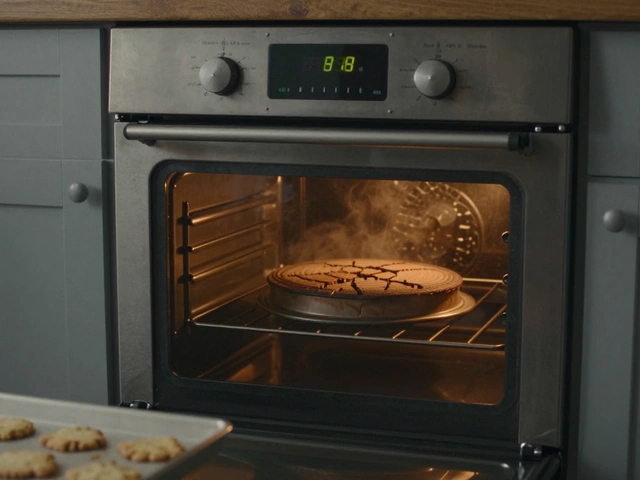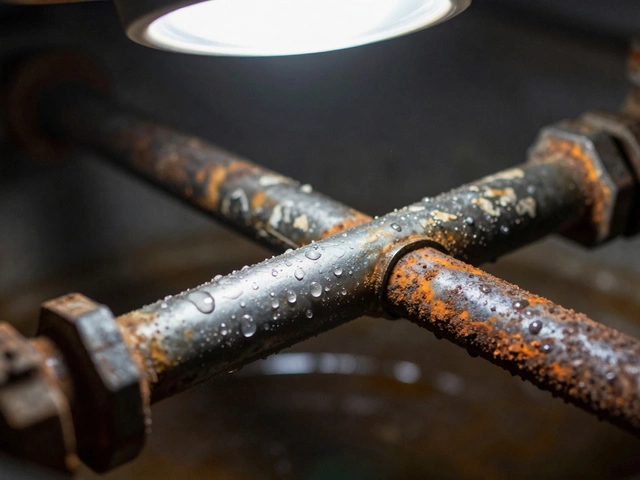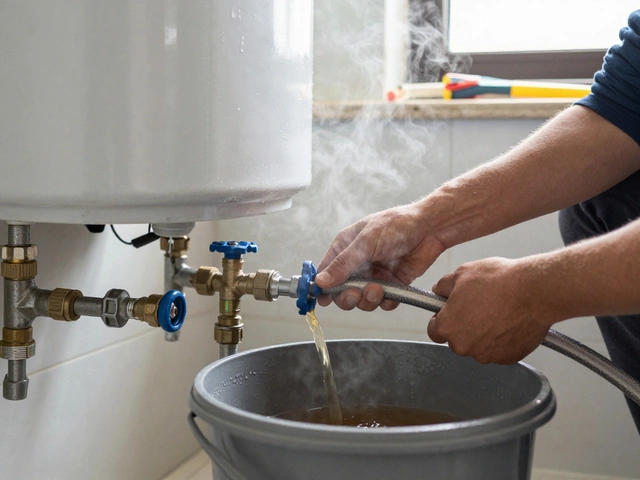Picture this: your 10-year-old oven suddenly won't heat up. Parts are starting to act weird, maybe the door won’t shut right, or things just cook unevenly. That nagging question pops up—should you fix it, or is it finally time for a new one?
Electric ranges aren’t built to last forever, but they aren’t exactly cheap to replace either. A lot of folks worry about tossing money into endless repairs, especially as appliances age. Let’s cut through the noise: a decade-old oven is right at that tipping point where repairs could be straightforward and affordable—or turn into a bottomless pit for your cash.
Before you even call a repair tech, check a few basics yourself. Are the burners not heating, or is it only the oven? Most electric ranges last somewhere between 13 and 15 years, so yours sits right at the halfway mark. Not every issue spells the end—sometimes, it's just a simple bake element swap or a busted knob. On the flip side, if you’re dealing with touch panel failures or a dead control board, costs can jump fast.
Keep this in mind: the national average for a pro oven repair hovers around $200-$400, but a new midrange electric oven can run $700-$1,200 or more. If you know what's wrong and it's a $40 part, fixing it seems like a no-brainer. But if multiple parts are dying, or you’ve had to call the repair guy more than twice in a year, that’s usually a red flag.
- How Long Do Ranges Really Last?
- Red Flags: When Repairing Makes Sense
- When to Stop Throwing Money at Repairs
- Smart Cost Comparison: Fix It or Ditch It?
- Tips for Stretching Your Range’s Life
How Long Do Ranges Really Last?
You’ve probably heard everything from five to twenty years. The truth? Most electric ranges hang on for about 13 to 15 years before major stuff starts breaking down. If you kept your owner's manual (yeah, the one buried in that junk drawer), it probably lists the same ballpark.
Those numbers aren’t just wishful thinking from manufacturers. According to 2024 data from Consumer Reports and appliance industry surveys, here’s what the average lifespan looks like for popular kitchen appliances:
| Appliance | Average Lifespan (years) |
|---|---|
| Electric Range (electric oven repair) | 13-15 |
| Gas Range | 15-17 |
| Dishwasher | 9-12 |
| Refrigerator | 10-13 |
It’s not just about years, though. How much you cook, how often you clean the oven, and whether you keep up with basic repairs actually have a huge impact. For example, if you regularly wipe out crumbs and spills, you’ll avoid those nasty burnt-on messes that mess with heating elements. And don’t forget power surges—no oven likes those. Surge protectors help a lot more than you’d think.
Want a simple test? If your electric range still heats evenly, the burners are reliable, and you’re not seeing odd error codes, you might squeeze several more years out of it. But if you’re always fighting with tripped breakers, a clock that resets itself, or broken dials, the oven might be trying to tell you something.
Red Flags: When Repairing Makes Sense
There are a couple of scenarios where calling someone for electric oven repair totally pays off, even for a 10-year-old range. The trick is knowing what issues are basically speed bumps—and what are full-on roadblocks.
Repairs are usually a good move when:
- The rest of your oven works fine and you’re facing just one clear problem—like a burner that won’t light or a broken door hinge.
- The issue is visible and easy to reach, like a busted bake element, a worn-out seal, or a loose wire behind a knob. These fixes rarely take more than an hour and don’t require tearing the appliance apart.
- You haven’t needed service in the past couple of years, and everything else seems to run like clockwork.
- Your oven is a higher-end model, where a simple fix means you keep quality features you’d pay a lot to replace today.
- Parts are still available, and service pros have tools and experience with your model (some brands phase out support after a decade – that’s a real headache).
Here’s a quick glance at common “worth fixing” problems and what they usually cost (based on 2024 data):
| Problem | Average Repair Cost | Repair Time |
|---|---|---|
| Bake Element Failure | $120 - $250 | 30-60 min |
| Broken Oven Door Seal | $80 - $150 | 30 min |
| Stuck Burner Switch | $90 - $180 | 20-40 min |
| Temperature Sensor Out | $100 - $200 | 30 min |
Another tip: if you’ve taken care of your oven, kept it clean, and dealt with little things as they pop up, most repairs at this age are straightforward. Mid-tier and high-end brands—think KitchenAid, GE Profile, or Bosch—also tend to hang in there longer with minor fixes.
Bottom line: If the problem is obvious, it hasn’t been one thing after another, and you aren’t getting hit with repairs that cost more than half the price of a new oven, then repairing really is your best value move.
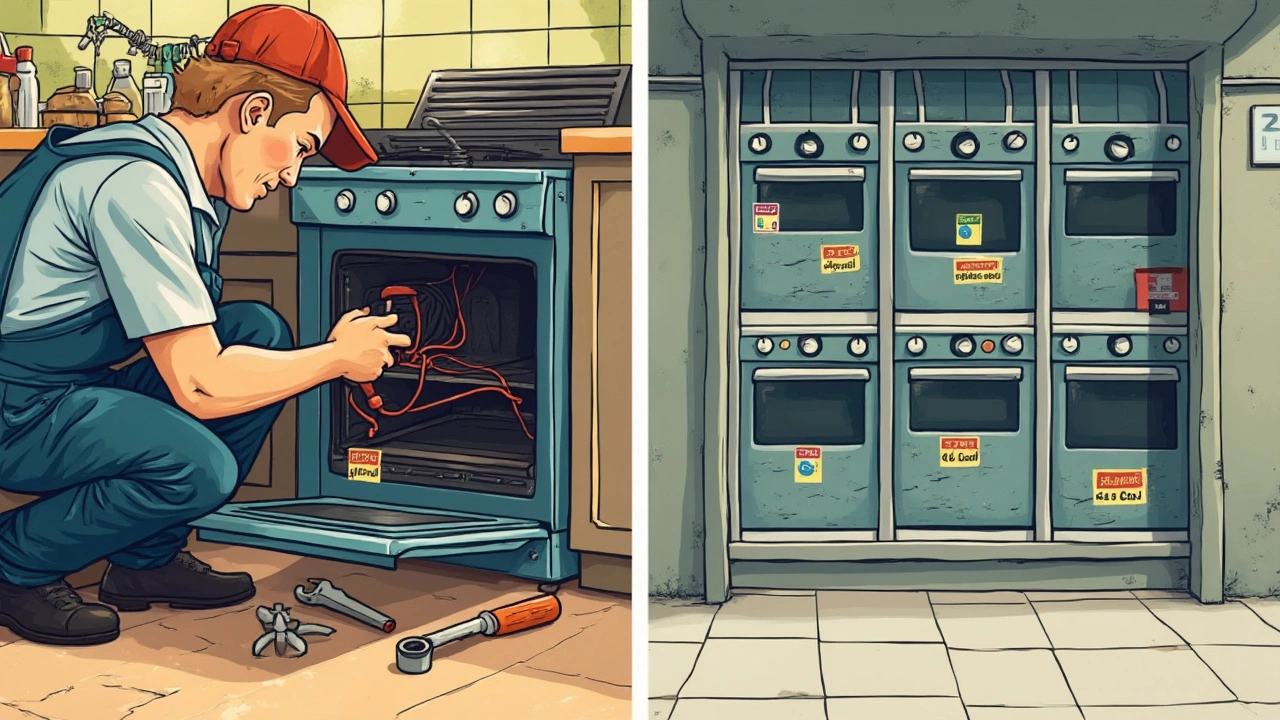
When to Stop Throwing Money at Repairs
It’s easy to keep patching up an old oven out of habit, but there’s a point where more repairs just don’t add up. A good rule of thumb is the 50% rule—if the repair bill is more than half the price of a new unit, think hard before moving forward.
Let’s get specific. Replacing a bake element or a faulty thermostat usually runs under $200—worth it if everything else is solid. But if you’re constantly calling the repair guy, that’s a different story. For example, a new control board can cost $300 or more, and when it combines with labor, you’re right up against the cost of basic new ovens.
Check out this comparison of common repair costs versus replacement:
| Repair Type | Average Cost | Worth Repairing? |
|---|---|---|
| Bake Element | $100-$200 | Usually |
| Thermostat | $150-$250 | If unit is in good condition |
| Control Board | $300-$400 | Only if oven is otherwise flawless |
| Door/Seal Replacement | $150-$250 | Depends on condition |
| Multiple Issues in One Year | $400+ | Usually not worth it |
Another sign it’s time to quit? If your electric oven repair costs are stacking up and the oven is wearing out in other ways—like broken knobs, weird smells, or uneven cooking—you’re likely chasing a lost cause. Modern ovens are also much more energy efficient; so, holding onto a power-hungry, aging model may cost you more in bills over time.
- If you’re waiting on rare parts or repairs are taking weeks, that’s a big headache and a sign to consider moving on.
- Appliance warranties rarely cover much after the first year or two. If you’re outside that window, all repairs come out of your pocket.
- Manufacturers stop making some parts as ovens age—so sometimes you literally can’t fix it even if you want to.
In short, don’t hang on just because you’ve already spent money on past repairs. Sometimes, cutting your losses early means saving cash (and frustration) down the road.
Smart Cost Comparison: Fix It or Ditch It?
Let’s get real about the numbers, because guessing gets you nowhere when it comes to an old oven. Start by tracking down the repair quote and stack it up against what a new range would set you back. If your repair costs add up to more than half the price of a new appliance, most experts say you’re better off replacing instead of fixing. Here’s how the math usually shakes out for a decade-old oven:
| Repair Type | Average Cost (USD) | DIY Possible? |
|---|---|---|
| Heating Element Replacement | $120 – $350 | Yes |
| Thermostat Replacement | $110 – $300 | Yes |
| Control Board Repair | $250 – $500 | Rarely |
| Oven Door Fix (hinges, seals) | $90 – $250 | Sometimes |
A electric oven repair might feel cheap compared to buying new, but the real cost is in repeat service calls and the risk of bigger breakdowns. Think about things like energy efficiency, too—a newer model can cut your bill by up to 20%, especially after the 2023 federal energy standards updates.
Here’s a quick gut-check list to help you decide:
- If repair costs are less than 50% of a new oven, and the problem is minor, go for the fix.
- If the oven’s been fixed for the same issue before or needs multiple parts replaced, start pricing new ranges.
- If the oven is super outdated (think: very basic features or no digital timer), getting a modern upgrade could actually save money in the long run.
- Don’t forget hidden charges—delivery and installation fees on new models or “diagnostics” added to your repair bill.
If you want a long-lasting solution and fewer headaches, sometimes biting the bullet and upgrading makes more sense than squeezing more life out of a tired range.

Tips for Stretching Your Range’s Life
Want to squeeze a few extra years out of your oven? Regular habits make a massive difference. Dirt, grease, and burnt-on food act like slow poison for electric ovens. If you wipe up spills right after cooking—once things have cooled, of course—you keep heating elements and sensors working as they should. Avoid using harsh cleaners or metal scrubbers on control panels and oven windows, since those can actually damage important components.
Don’t slam the oven door. Hinges wear out faster, and poor seals cause heat loss, which means uneven cooking and a bigger power bill. That old myth about using foil to protect the bottom? Skip it. Blocking vents messes with airflow, forcing your range to work harder and risking damage to the heating element or thermostat.
Pro tip: Pull your range out once a year to vacuum behind it. Dust and grease back there can gum up the cooling fan and even start a fire. While you’re at it, check the power cord for cracks or damage—fraying cords are a real safety hazard.
When a burner goes out or control knobs start sticking, replacing parts is usually straightforward and cheaper than a full repair call. Burner elements, oven lights, and knobs are almost always available for models up to 15 years old. All this routine stuff not only makes your oven work better, but it also helps you spot small problems before they blow up into expensive headaches.
- Clean up spills right away—use a soft, damp cloth or sponge.
- Test all burners and oven functions every few months to catch early problems.
- Check door seals and hinges; loose or worn parts can be swapped out in an afternoon.
- Replace cheap parts like knobs and oven bulbs yourself—they're often under $20 online.
- Book a pro checkup if you notice flickering displays, electrical smells, or if the fan suddenly gets loud. Small issues with your electric oven repair can turn big if ignored.
All these habits don’t just make things last—they help dodge scary repair bills and keep your kitchen running smoothly when you need it most.




